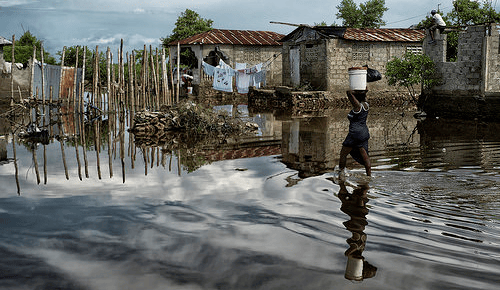
In un articolo pubblicato di recente sulla rivista Journal of Environmental Management, un gruppo di autori (tra questi, i ricercatori CMCC S. Torresan, A. Critto, A. Sperotto, A. Marcomini) passa in rassegna gli strumenti di analisi multi-rischio attualmente disponibili e impiegati nei progetti, cercando di fornire una base da cui partire per lo sviluppo di una nuova metodologia multi-rischio che tenga conto dell’effetto dei cambiamenti climatici.
Una sfida importante, infatti, è rappresentata oggi dallo sviluppo di approcci formali esaustivi per la valutazione dei diversi pericoli e rischi climatici, che tengano conto anche di esposizioni e vulnerabilità dinamiche.
L’abstract dell’articolo:
This paper presents a review of existing multi-risk assessment concepts and tools applied by organisations and projects providing the basis for the development of a multi-risk methodology in a climate change perspective.
Relevant initiatives were developed for the assessment of multiple natural hazards (e.g. floods, storm surges, droughts) affecting the same area in a defined timeframe (e.g. year, season, decade). Major research efforts were focused on the identification and aggregation of multiple hazard types (e.g. independent, correlated, cascading hazards) by means of quantitative and semi-quantitative approaches. Moreover, several methodologies aim to assess the vulnerability of multiple targets to specific natural hazards by means of vulnerability functions and indicators at the regional and local scale.
The overall results of the review show that multi-risk approaches do not consider the effects of climate change and mostly rely on the analysis of static vulnerability (i.e. no time-dependent vulnerabilities, no changes among exposed elements). A relevant challenge is therefore to develop comprehensive formal approaches for the assessment of different climate-induced hazards and risks, including dynamic exposure and vulnerability. This requires the selection and aggregation of suitable hazard and vulnerability metrics to make a synthesis of information about multiple climate impacts, the spatial analysis and ranking of risks, including their visualization and communication to end-users. To face these issues, climate impact assessors should develop cross-sectorial collaborations among different expertise (e.g. modellers, natural scientists, economists) integrating information on climate change scenarios with sectorial climate impact assessment, towards the development of a comprehensive multi-risk assessment process.
Leggi la versione integrale dell’articolo
:
Gallina V., Torresan S., Critto A., Sperotto A., Glade T., Marcomini A.
A review of multi-risk methodologies for natural hazards: Consequences and challenges for a climate change impact assessment
2016, Journal of Environmental Management, 168:123-132, DOI: 10.1016/j.jenvman.2015.11.011


